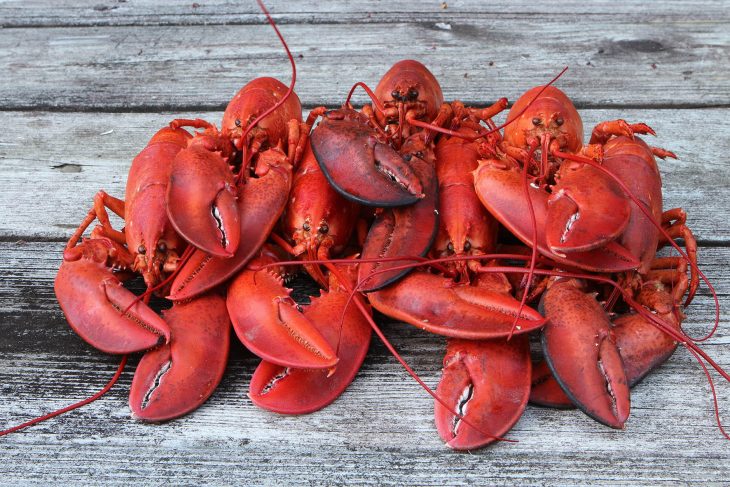The Maine lobster industry is bigger and more lucrative than ever, with fishermen landing more than 130 million pounds of lobster valued at $533.1 million in 2016.
That is a record for both landings and industry value, according to Commissioner Patrick Keliher of the Department of Marine Resources, who announced the results Friday at the annual Maine Fishermen’s Forum.
“This is a critical industry for Maine, so these record highs mean a lot to the men and women who fish our waters, as well as the communities that depend on them,” Keliher said.
The record haul is the result of strong conservation efforts, a decline in lobster predators, and younger sexual maturity and spawning as a result of warming waters, Keliher said.
The record value of the fishery, which surged to $547.2 million with co-op bonuses included, is the result of a strong dealer network and state-funded marketing efforts, he said.
In 2016, the state’s 6,000 licensed lobster fishermen landed an extra 8.4 million pounds of lobster, which is 6 percent more than in 2015, data shows.
With the per-pound boat price remaining stable, dropping 2 cents from last year’s high of $4.09 per pound, the extra catch in 2016 netted them $31.8 million more than 2015.
Those are boat prices, not consumer prices, but according to commodity news reporting service Urner Barry, the consumer price of New England lobsters hit all-time highs in 2016, too.
In January of this year, New England lobsters were fetching over $7 a pound.
Some of that was because of the big demand for lobster in China, Keliher acknowledged. Maine’s lobster dealers have worked hard to build demand there and then fill it, he said. In 2016, even without December data and the lucrative Chinese New Year rush, Maine had shipped $27.5 million in live lobster to China, nearly triple the 2015 totals, trade data shows.
Keliher credited the work of the Maine Lobster Marketing Collaborative, which works to build demand domestically through restaurant and national media, for the rising value, too. The collaborative, which is under fire from some fishermen for its high budget at a time when fishing license fees are rising, helped land more lobster on U.S. menus, Keliher said.
“The Asian market has been growing, but we haven’t even fully saturated domestic demand, which is at an all-time high,” Keliher said. “The industry is in good shape right now.”
Keliher knows that could change at any time, especially with the Gulf of Maine warming fast. That is why he wants to increase department research, even if it means a license hike.
“While we can take this moment to celebrate the great value of Maine’s marine resources, we cannot lose sight of the signs of change,” Keliher said. “The agency and the industry must work to not only safeguard our iconic lobster fishery, but also to work together on solutions that ensure the health and resiliency of all Maine fisheries.”
Lobster is the most valuable, and fastest growing, of all the state’s commercial fisheries, which in 2017 topped $700 million, according to state data.
Lobster represents 75 percent of the state’s total commercial fishery value.
The next most valuable category is “other species,” a designation that reflects species whose identification is confidential because so few harvesters capture them. “Other species” accounted for just over 15 percent of 2016’s $735 million catch, or $99.7 million.
Atlantic herring, the bait of choice for lobstermen, is third most valuable species, accounting for $19 million, despite a decline in landings.
Stonington, Vinalhaven and Portland remained the top three fishing ports in Maine for the third year in a row, but Beals knocked Friendship out of the number four spot this year.
Swans Island, a longtime lobster mainstay, fell out of the top 10 this year, while Owls Head and Bass Harbor broke the top 10 for the first time.
Source: Press Herald



